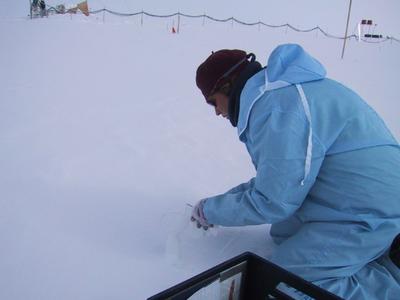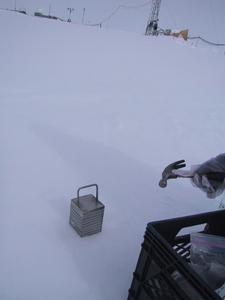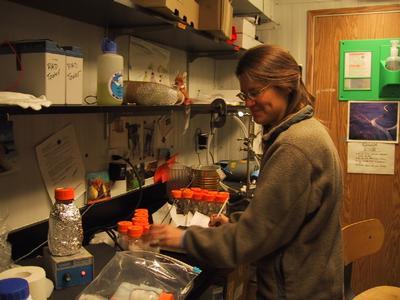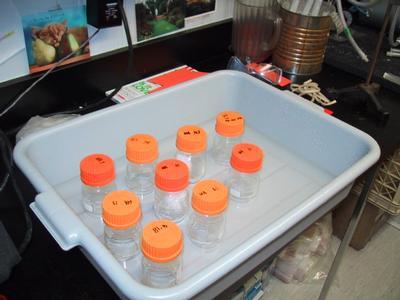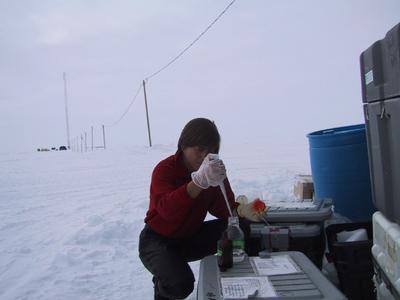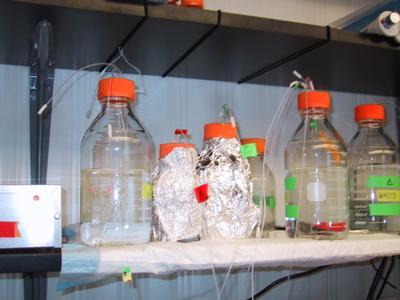
|
20 July, 2001Why study the snow ? My main project here at Summit involves the sampling and analysis of snow. Good thing, since that's about all that's here. 3000 meters of it in fact. The depths of which have become ice. Markus and I will be studying the snow and atmosphere simultaneously, twenty four hours a day for the next month. This will allow us to better understand how the atmosphere and snow interact before eventually forming the ice. The ice, cored here in the early 1990ís, contains approximately one hundred thousand years of climate records. Through these intensive daily snow studies, the scientists are confirming their theories about the atmospheric records stored in the ice cores. To learn more about the ice and the coring project that took place in Greenland review this web site: into the arctic Believe it or not, there are many ways one can examine snow to learn more about it and the atmosphere that created it. Each group here has a unique, but interrelated , project involving the snow. The University of Arizona group is looking at the snow through a process of collection and chemical analysis. Specifically, we are looking for two chemicals here: H202 - hydrogen peroxide, an indicator of the cleaning capacity of the atmosphere and HCHO - formaldehyde, a product of the hydroxyl (HO) radical combining with methane, a greenhouse gas. The concentration of these two chemicals in the snow can tell us about the concentrations of certain gases in the atmosphere. They also give us indications of the amount of cleaning capacity of the atmosphere, since the HO radical present in both compounds is thought to help capture some of the destructive gases emitted by man. H202 and HCHO are both water soluble and stable, making them good choices as indicators. ( for more about this chemical process - read ďAtmosphere, Climate and Changeď by Thomas Graedel and Paul Crutzen, 1997, pages 42 -45) In order to see variations in the snow chemistry we sample several times a day or in several locations. I also sample fresh snow and fog deposits called rime whenever these occur. The snow changes quickly from the time it is deposited due to the effects of sunlight and temperature. We are trying to better understand those changes and the processes. Overall, the snow collection and analysis process takes several hours. First, wearing a clean suit and gloves, I collect the snow into small glass bottles, called schott bottles. To accomplish this, I use a special metal snow sampling tool that allows me to sample the snow one centimeter layer at a time. After I have collected and bottled the clean snow, I return to the lab to weigh so its density can be calculated. Once it is weighed, I allow the sealed bottles of snow to melt in the room temperature of the lab. Once the melting is complete the analysis process can begin. The snow, now water, is suctioned through tiny tubes where it is mixed with reagents and flows through instruments that sense the chemicalís concentration by way of light emission or absorption. To learn more about this stage of the process read here 1000 bottles of snow After a sample has been on line for three minutes it is removed and another put in its place. The remainder of the sample water is then bagged in small bags, called whirlpacks, and returned to the freezer so that it can be retested if there is a problem with the data. The Schott bottles are then returned to the clean room for washing and another round of filling with snow.
Contact the TEA in the field at . If you cannot connect through your browser, copy the TEA's e-mail address in the "To:" line of your favorite e-mail package. |





